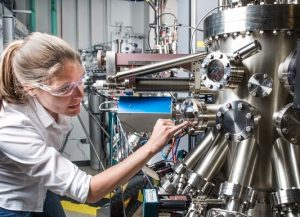When it comes to cryogenic service, no piece of equipment is immune to its challenges, especially gaskets. As temperatures swing dramatically between ambient and cryogenic levels, gasket sealing mechanisms often suffer. This newsletter aims to address the specific issues faced by gaskets in such extreme conditions.

**How Do Cryogenic Temperatures Impact Gaskets?**
Cryogenic temperatures reduce the ductility of metallic, semi-metallic, and polymer gaskets while increasing their hardness and brittleness. This decrease in ductility can lead to breakage, poor sealing, and eventual failure.
**What Happens to Spiral Wound, Camprofile, or Other Semi-Metallic Gaskets?**
Traditional metallic gaskets like spiral wound or camprofile types aren’t designed for cryogenic applications. These gaskets lose their flexibility at cryogenic temperatures, leading to a loss of sealing integrity due to reduced flexural properties.
**Why Do Extreme Bolt’s Revoseal Gaskets Excel in Cryogenic Environments?**
Revoseal gaskets are engineered with the unique demands of cryogenic service in mind. Their materials and designs are optimized to function like springs, even under extreme cold conditions. This enhances their ability to adapt dynamically to expanding and contracting joints, ensuring a reliable seal in fluctuating environments. Additionally, Revoseal gaskets can incorporate materials like nickel alloys to boost ductility. Their design, combining a metal-to-metal seal with a PTFE/graphite soft seal, requires less sealing force compared to conventional graphite or spiral wound gaskets.
**How Long Can Revoseal Gaskets Last Compared to Traditional Options?**
Revoseal’s superior flexural design ensures minimal leak rates in cryogenic settings. Unlike traditional all-metal or spiral wound gaskets, Revoseal gaskets can last significantly longer under steady-state cryogenic conditions. In fact, they typically exhibit an order of magnitude lower leak rates than other metallic seals like camprofile or spiral wound gaskets.
In non-steady state cryogenic conditions—where pressures, vacuums, or temperatures fluctuate considerably—standard metallic gaskets might crack or fail to adjust adequately to expansion and contraction, leading to high leak rates. Revoseal gaskets, however, maintain performance across all critical parameters.
**Revoseal Case Study: Anorganic Chemical Production**
This case study focuses on the production of polychlorinated fluoridic hydrocarbonates, commonly used as refrigerant fluids and pharmaceutical propellants.
- **Process Conditions:** Media includes HF, CH, Oxygen, and R134a/R133a. Operating temperatures range from -200°C to 430°C, with pressures from vacuum to 160 bar.
- **Results:** By switching to Revoseal ECO+ gaskets, the company extended the gasket life to five years compared to the mere 3-9 months achieved with traditional spiral wound gaskets. This shift allowed them to meet their annual maintenance schedules without unexpected downtime.
---
While this solution addresses the technical aspects of gasket performance, there's always room for improvement in design and material science. Continued research into advanced materials and innovative gasket architectures could further enhance durability and reliability in extreme conditions.
Engineered Wood Flooring
Engineered wood flooring trends include the following:
1. Environmental protection materials: With the improvement of people's awareness of environmental protection, more and more consumers choose to use environmental protection materials. Engineered wood flooring is a combination of wood and man-made materials. Compared with solid wood flooring, the wood used is more economical and can reduce the cutting of natural forests.
2. High-quality appearance: Engineered wood flooring has the natural beauty and texture of solid wood flooring, and it can also create more diversified appearance effects through processing technology. Consumers are increasingly demanding the appearance of the floor, Engineered wood flooring can meet their needs for high-quality appearance.
3. Durability and wear resistance: Engineered wood flooring adopts a multi-layer structure to make it have high durability and wear resistance. This makes it suitable for use in high-traffic areas such as kitchens and hallways in commercial premises and homes.
4. Convenient installation and maintenance: Engineered wood flooring is more convenient to install than solid wood flooring. It can be installed by locking system or adhesive, reducing installation time and cost. At the same time, Engineered wood flooring is also easier to maintain than solid wood flooring, and only needs regular cleaning and maintenance.
5. Diversified design and color choices: Engineered wood flooring provides a rich variety of design and color choices to meet consumers' needs for personalization and customization. From classic wood grain design to modern stone and metal grain design, consumers can choose the right floor according to their own preferences and home style.
In general, the popular trend of Engineered wood flooring is to develop in the direction of environmental protection, high quality, durability, convenient installation and maintenance, and diversified design and color selection. These trends reflect changes in consumer demand and preferences for flooring.
Engineered Wood Flooring,Engineered Solid Wood Flooring,Oak Engineered Flooring,Multi Layer Engineered Flooring
Jiangsu Zhenrui Furniture Material Co., Ltd. , https://www.zrfloors.com